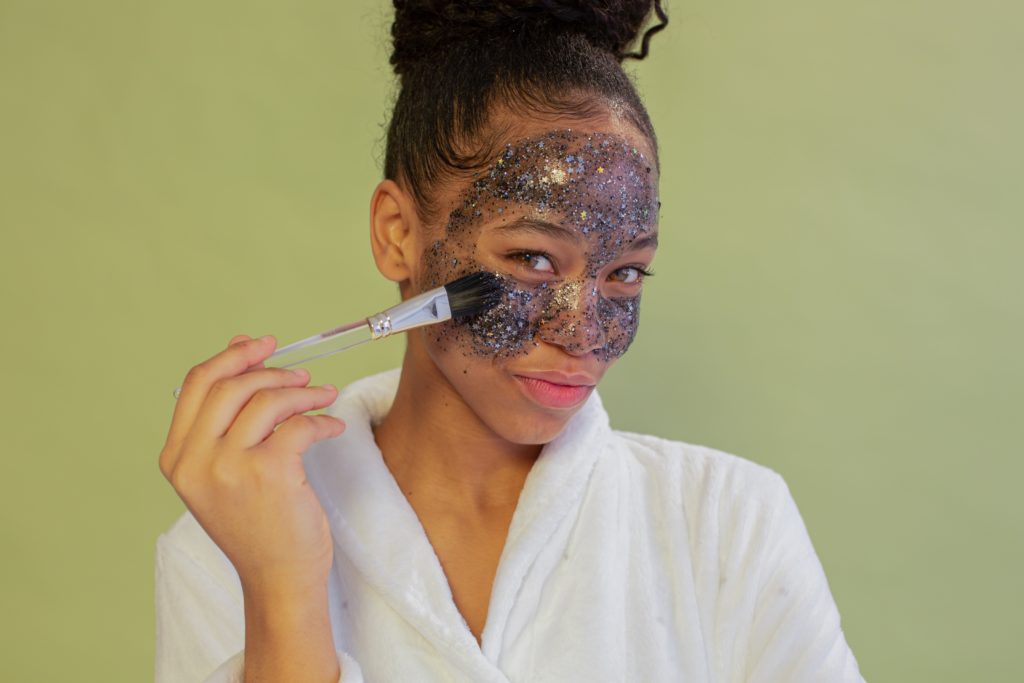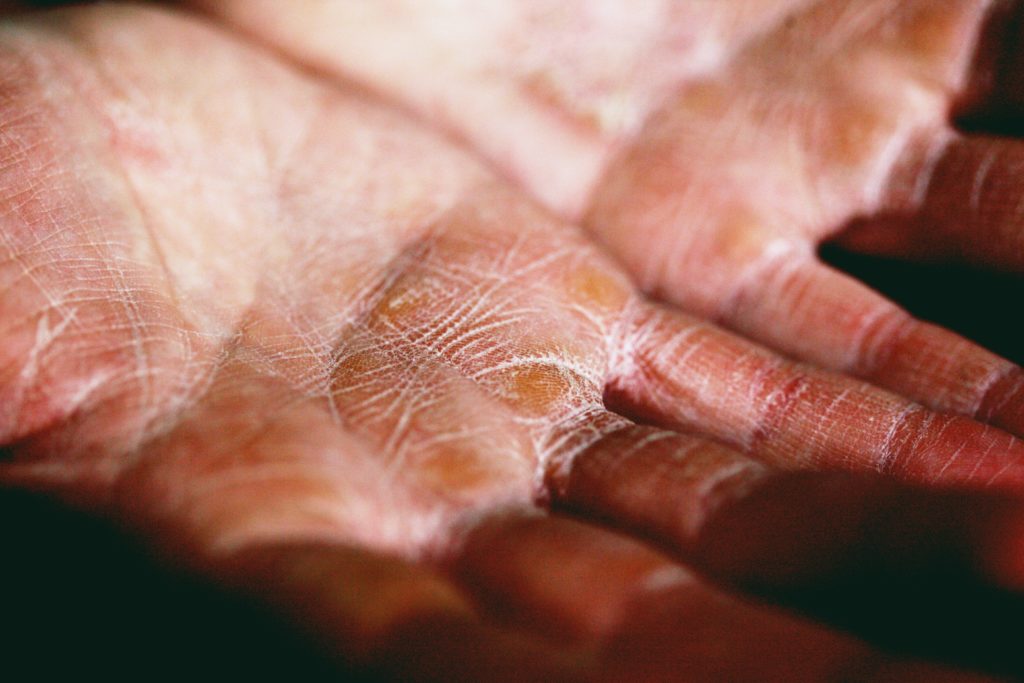We all have those weeks where work, school, or other responsibilities seem to pile up, leaving us stressed and exhausted. One of the best ways to unwind and recharge after a long week is by treating ourselves to a little pampering. And what better way to pamper yourself than by giving your skin some much-needed attention?
Whether you’re dealing with dryness or breakouts or just need some relaxation, taking the time to pamper your skin can leave you feeling refreshed and rejuvenated.
Step 1: Cleanse
Cleansing is a crucial step in any skincare routine as it helps to remove impurities, excess oil, and dirt from your skin, leaving it feeling refreshed and clean.
To cleanse your skin effectively, select a gentle cleanser suitable for your skin type. If you have oily skin, choose a cleanser that helps to control excess oil, and if you have dry skin, choose a hydrating cleanser that won’t strip your skin of its natural oils.
Once you choose your cleanser, wet your face with lukewarm water. Apply a small amount of cleanser to your fingertips and gently massage it onto your skin in circular motions. Avoid rubbing too hard or using hot water to irritate your skin.
After cleansing your skin thoroughly, rinse your face with lukewarm water, and pat it dry with a clean towel. Remember to be gentle when drying your skin, as harsh rubbing can irritate.
Step 2: Exfoliate
Exfoliating your skin is an important step in pampering your skin after a long week. This process involves the removal of dead skin cells from the surface of your skin, which can make your skin look dull and uneven. Here are some things to keep in mind when exfoliating your skin:
First, it is important to choose the right exfoliating product for your skin type. There are many different types of exfoliants on the market, including physical exfoliants, which contain granules or beads to scrub away dead skin cells physically, and chemical exfoliants, which use acids to dissolve dead skin cells. If you have sensitive skin, opt for a gentler exfoliant or skip this step altogether.
When exfoliating, it is important to be gentle and not overdo it. Over-exfoliating can cause irritation and damage to your skin. Use a small amount of product and massage it into your skin in circular motions, focusing on areas more prone to dryness or roughness, such as the elbows, knees, and heels.
After exfoliating, rinse your skin thoroughly with warm water and apply a moisturizer to help lock in hydration. You should also avoid using harsh products or treatments on your skin for at least a day after exfoliating to give your skin time to recover.
Step 3: Moisturize
Moisturizing your skin is a crucial step in any skincare routine, especially after a long week. Moisturizers help to keep your skin hydrated and soft, preventing dryness, flakiness, and irritation. Here are some tips to follow when moisturizing your skin:
- Choose the right moisturizer for your skin type: Different skin types have different needs, so it’s important to choose a moisturizer that works for you. You may opt for a lightweight, oil-free moisturizer if you have oily skin. If you have dry skin, you may need a more heavy-duty moisturizer with ingredients like hyaluronic acid or ceramides.
- Apply moisturizer to damp skin: Moisturizer works best when applied to damp skin, as it helps to lock in moisture. After cleansing and toning your skin, pat it dry with a towel, leaving it slightly damp before applying your moisturizer.
- Use the right amount: Using too little moisturizer won’t provide the hydration your skin needs while using too much can clog your pores and cause breakouts. As a general rule, use a pea-sized amount of moisturizer for your face and neck.
- Don’t forget your eyes: The skin around them is delicate and prone to dryness, so it’s important to use a separate eye cream to keep it hydrated.
- Moisturize regularly: To get the full benefits of moisturizing, it’s important to make it a regular part of your skincare routine. Aim to moisturize your skin twice a day, in the morning and before bed.
Step 4: Treat
Treatments can help to target specific skin concerns such as acne, hyperpigmentation, or fine lines. While these treatments may not be necessary for everyone, they can boost your skin after a long week.
You can try various treatments at home, such as face masks or facial oils, or you can visit a professional for more advanced treatments like chemical peels or microdermabrasion.
When choosing a treatment, consider your skin type and the specific concern you want to address. For example, if you have dry skin, you may want to use a hydrating mask, while oily skin may benefit from a clay mask to absorb excess oil.
It’s also important to follow the instructions carefully and not overdo it with treatments, as this can cause irritation and further skin issues. Always do a patch test first if you’re trying a new product to ensure you’re not allergic to any ingredients.
Finally, don’t forget to follow up your treatment with a moisturizer to keep your skin hydrated and nourished. With the right treatment and follow-up care, you can help improve the look and feel of your skin, leaving you feeling refreshed and revitalized after a long week.
Step 5: Relax
After cleansing, exfoliating, moisturizing, and treating your skin, it’s important to take some time to unwind and let your body and mind relax. Relaxation is beneficial not only for your skin but for your overall well-being as well. Here are some recommended relaxation techniques to incorporate into your skin pampering routine:
- Meditation – Sit comfortably and focus on your breath. Allow your thoughts to come and go without judgment.
- Deep breathing – Inhale deeply, holds for a few seconds, and exhale slowly. Repeat this several times to calm your body and mind.
- Yoga – Practice gentle yoga poses to stretch your muscles and improve your flexibility. Yoga can also help to reduce stress and anxiety.
- Aromatherapy – Use essential oils like lavender or peppermint to create a calming atmosphere. You can use a diffuser or candles or even apply them directly to your skin.
- Music – Play some relaxing music to help you unwind. You can choose from a variety of genres, such as classical, nature sounds, or guided meditation.
Remember, relaxation doesn’t have to take a lot of time or effort. Even taking a few deep breaths or listening to calming music for a few minutes can make a difference. By incorporating relaxation into your skin pampering routine, you will not only feel more refreshed and rejuvenated but also notice an improvement in the overall appearance of your skin.
Conclusion
Taking care of our skin is essential for our overall health and well-being, especially after a long and stressful week. By following these simple steps of cleansing, exfoliating, moisturizing, treating, and relaxing, we can give our skin the love and attention it deserves.
Not only does skin pampering leave our skin feeling soft and rejuvenated, but it also helps us to unwind and destress. So, let’s commit to regularly pampering our skin and showing ourselves some self-care and self-love. Your skin will thank you for it!
Frequently Asked Questions (FAQs) on Pampering Your Skin After a Long Week
1. Why is it important to pamper your skin after a long week?
Our skin goes through a lot during the week, including exposure to environmental pollutants, stress, and makeup. Pampering your skin helps to rejuvenate it, promote cell turnover, and improve overall skin health.
2. How often should I pamper my skin?
It is recommended to pamper your skin at least once a week to maintain healthy and glowing skin. However, you may want to pamper your skin more frequently if you have a specific skin concern.
3. What are the steps for pampering your skin after a long week?
The steps for pampering your skin after a long week typically include cleansing, exfoliating, moisturizing, treating, and relaxing. You can customize the steps based on your skin type and specific skin concerns.
4. What are some recommended products for pampering your skin?
There are many products available for pampering your skin, including cleansers, exfoliators, moisturizers, serums, and face masks. Look for products that are tailored to your skin type and concerns.
5. Can I pamper my skin at home, or do I need to go to a spa?
You can definitely pamper your skin at home. There are many at-home treatments and products available that can help you achieve healthy and glowing skin. However, if you prefer a spa experience, you can book a facial or other skin treatment.
6. How long should I spend pampering my skin?
The time you spend pampering your skin depends on the steps you choose and your schedule. Some people may only have 30 minutes to spare, while others may want to spend an hour or more. The most important thing is to give your skin the attention and care it deserves.
7. What relaxation techniques can I use during my skin pampering session?
Some popular relaxation techniques include deep breathing, meditation, aromatherapy, and yoga. You can also listen to calming music or take a warm bath to help you relax and unwind. The goal is to create a peaceful and stress-free environment to fully enjoy your skin pampering session.



